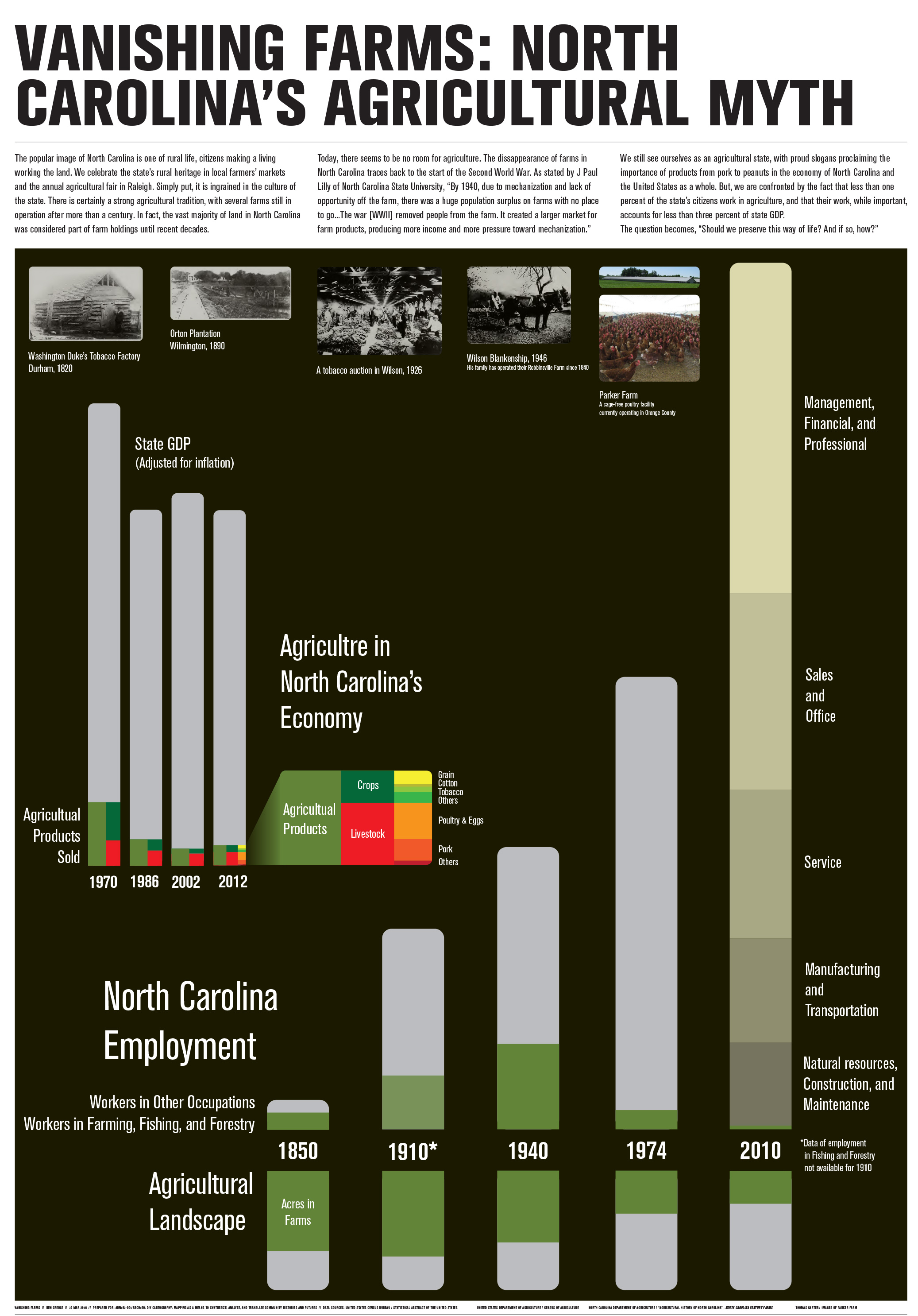 VANISHING FARMS: NORTH CAROLINA’S AGRICULTURAL MYTH
VANISHING FARMS: NORTH CAROLINA’S AGRICULTURAL MYTH
The popular image of North Carolina is one of rural life, citizens making a living working the land. We celebrate the state’s rural heritage in local farmers’ markets and the annual agricultural fair in Raleigh. Simply put, it is ingrained in the culture of the state. There is certainly a strong agricultural tradition, with several farms still in operation after more than a century. In fact, the vast majority of land in North Carolina was considered part of farm holdings until recent decades.
Today, there seems to be no room for agriculture. The dissappearance of farms in North Carolina traces back to the start of the Second World War. As stated by J. Paul Lilly of North Carolina State University, “By 1940, due to mechanization and lack of opportunity off the farm, there was a huge population surplus on farms with no place to go…The war [WWII] removed people from the farm. It created a larger market for farm products, producing more income and more pressure toward mechanization.”
We still see ourselves as an agricultural state, with proud slogans proclaiming the importance of products from pork to peanuts in the economy of North Carolina and the United States as a whole. But, we are confronted by the fact that less than one percent of the state’s citizens work in agriculture, and that their work, while important, accounts for less than three percent of state GDP.
The question becomes, “Should we preserve this way of life? And if so, how?”